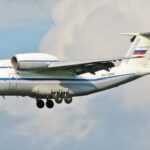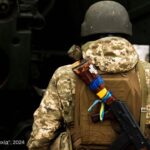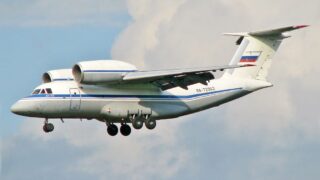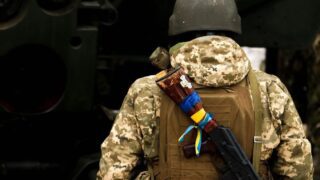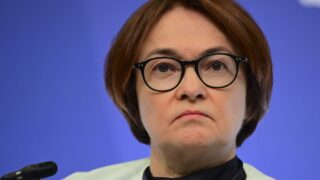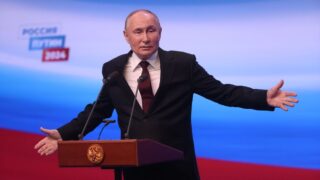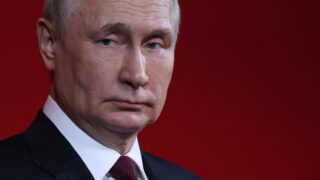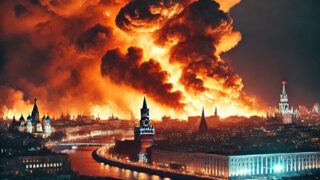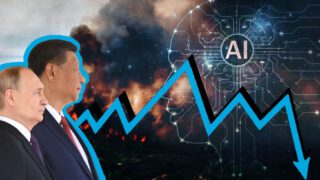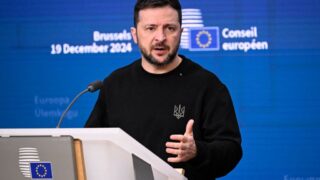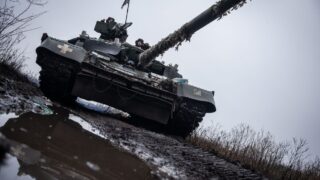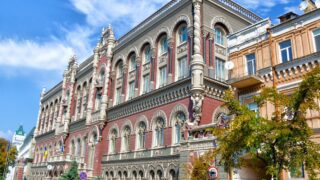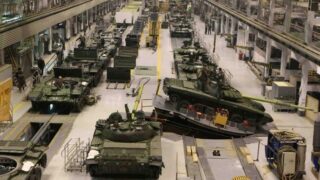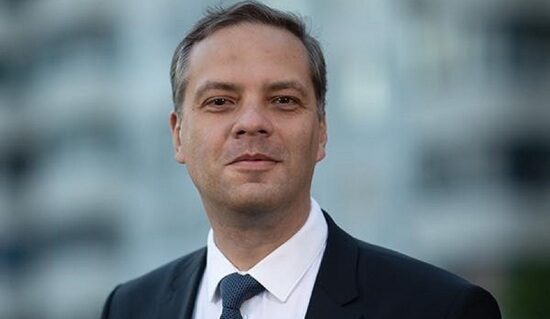
Putin must end Ukraine war by 2025 or face economic collapse, warns ex-energy chief
With the ruble under pressure and Russia’s economy facing growing strain, attention is shifting from the battlefield to the “financial front.” Much ink has been spilled on the topic, but even respected Western economic outlets have only scratched the surface.
Unsatisfied with such analyses and seeking deeper answers, Ukrainian OSINT analyst Tatarigami spoke with Vladimir Milov, former Russian Deputy Minister of Energy, economist, energy expert, a close ally of Alexei Navalny, and Vice President of the Free Russia Foundation. In this exclusive interview, Milov breaks down the fundamentals of Russia’s economy and what the coming months may hold.
With the Central Bank’s interest rates at 21% and Russia’s National Wealth Fund depleting rapidly, Milov argues the Kremlin faces difficult choices in 2025, potentially including peace talks over Ukraine. While the battleground situation – with Russia’s advances in Donbas – doesn’t suggest any immediate need for negotiations, the economic data tells a different story.
EP: Let’s start with something that’s been making headlines – the Russian ruble’s dramatic decline. What does this mean for Russia’s economy?
VM: The ruble’s decline reflects fundamental problems in Russia’s economy. Everyone’s nervous about the upcoming Central Bank’s board meeting on 20 December. The Bank will almost certainly raise interest rates again – they’re already at 21%, and we might see them jump to 23% or even 25%.
The Central Bank started hiking rates in July 2023 to fight inflation, but that strategy hasn’t worked out as planned. In fact, inflation is still climbing—we saw it hit nearly 0.4% per week in November. That’s pretty alarming.
The markets are especially gloomy because everyone now realizes these tight monetary policies will likely stretch well into 2025. Nobody was ready for such a long period of high interest rates. We can already see the impact on the economy – GDP growth has dropped from 5.4% in early 2024 to just 3.1% in the third quarter. Looking ahead to 2025, the Central Bank is projecting only 0.5-1.5% growth, and honestly, given recent trends, even that might be optimistic. With the current economic picture, everyone expects that the worst is yet to come – the main reason behind the ruble’s collapse.
Some analysts point to recent US sanctions against Gazprombank and other Russian banks as another factor hurting the ruble. Yes, these sanctions have made international payments more difficult, but they’re not the whole story. The last time we saw the ruble this weak was in March 2022, right after the full-scale invasion of Ukraine. What we’re seeing now reflects much deeper problems.

This currency decline is actually making inflation worse because Russia still depends heavily on imports. And I have to push back against those claiming a weaker ruble helps exporters or the budget. Exporters can’t really capitalize on the cheaper ruble because of international embargoes – even China and other Global South countries aren’t opening their markets to most Russian goods. As for the budget impact, it’s more complicated than people think. Sure, the government gets more rubles from exports now, but the higher inflation and import costs probably outweigh any benefits.
Looking at the bigger picture, we’re approaching the three-year mark since the invasion of Ukraine, and Russia’s economy is still searching for solid ground. Import substitution isn’t working; China’s only buying our basic commodities at big discounts while keeping their market closed to other Russian products, and we’re not seeing any meaningful investment or technology transfer from China or other Global South countries.
What’s particularly telling is what you hear at economic forums these days—it’s just endless requests for state support. Businesses keep saying they can’t survive without subsidies, that they lack technology, investment, skilled workers, and profitability. It really makes you wonder what’s left.
The inflation problem really shows how Western sanctions are biting. The Central Bank points to what they call an “output gap” – basically, manufacturers can’t keep up with demand because they lack investment, technology, and workers due to the war. This forces the Bank to raise interest rates, hurting businesses even more since most sectors simply can’t operate profitably at these rates. It’s a downward spiral that helps explain why both the markets and the ruble are struggling.
EP: EP: With Russia’s central bank rate at 21%, there’s growing concern about inflation. Some compare this to Türkiye, which saw inflation peak at 85% in 2022 and 75% in 2024. How do you see these comparisons?
VM: The comparison with Türkiye really only works on the surface. Yes, both countries have high inflation, but the similarities end here. Türkiye has some major advantages that Russia lacks right now – it’s open to international trade, has a customs union with the EU, and still attracts foreign investment. They’ve got a skilled workforce and healthy demographics. In fact, Russia is actually importing workers from Türkiye these days.
But let me be clear—we shouldn’t consider Türkiye’s situation normal or acceptable. High inflation seriously hurts business confidence and investment. Think of it as borrowing growth from the future. The impact is especially harsh on complex manufacturing and tech industries, which need long-term planning and stable financing. Ironically, the military industries are getting hit hardest in Russia because of their long production cycles. When they deliver products to the government, inflation has eaten away at the agreed payment values.
EP: There seems to be growing tension between the Central Bank and industrial groups over monetary policy. Some are even suggesting replacing Central Bank Governor Elvira Nabiullina. What’s really going on here?
VM: Both sides miss the fundamental issue – Russia’s war in Ukraine. The Central Bank correctly argues that lowering rates risks hyperinflation, while industrialists rightly point out that 25-30% commercial loan rates are unsustainable for businesses. The real drivers are military spending fueling inflation, severe labor shortages, and sanctions limiting production capacity.
The solutions are actually pretty straightforward: end the war, cut military spending, get the workforce back from the front lines, regain access to international markets, and restore access to foreign loans and technology. Of course, this would require Russia to leave occupied Ukrainian territories, deal with war crimes, and pay compensation for damages.

The Central Bank is acting like this is a normal economy where you can control inflation just by adjusting interest rates and managing the money supply. But that’s not Russian reality. When inflation is driven by war spending, sanctions hamper industry, and there’s a severe worker shortage, interest rates alone can’t fix the problem. Just look at the results – they’ve been hiking rates since July 2023, but inflation is still accelerating, hitting nearly 0.4% per week in late November. That’s roughly 20% annually.
The industrial lobbyists are equally detached from reality. Their argument basically says, “Let’s accept higher inflation so we can access cash – look at Türkiye, they’re managing.” But as I mentioned earlier, Türkiye isn’t really managing well, and Russia would fare much worse under those conditions
It’s strange watching these two sides debate while both ignore the real issue – the war. Neither the Central Bank’s tight policy nor the industrialists’ push for looser rates offers a real solution. Tight rates will freeze the economy, while loose ones will lead to hyperinflation. The only viable path forward is ending the war, but that option is not on the table for now.
EP: In early October, Russia announced it was doubling its 2024 federal budget deficit from 1.6 trillion rubles ($16.4 billion) to 3.3 trillion rubles ($33.8 billion). Please explain what this means and how it might affect Russia’s economy.
VM: Let me break this down simply. A budget deficit occurs when the government spends more money than it brings in. When this happens, it needs to find money somewhere else—typically by borrowing or using its savings unless it cuts spending.
Here’s Russia’s current challenge: borrowing money has become extremely difficult. They can’t access Western financial markets or get help from organizations like the IMF—something they’ve historically relied on during past crises, like World War I or the Soviet era of the 1980s. Even China isn’t interested in helping—they won’t even let Russia issue government bonds in yuan.
Sure, Russia can still borrow domestically, but it doesn’t make much financial sense. With interest rates so high – we’re seeing yields over 17% on 10-year government bonds – they’re actually losing money on this approach. In the first 10 months of 2024, they spent 1.3 trillion rubles more on debt payments than they raised through bond sales.
That leaves them with their savings, specificallythe National Wealth Fund – think of it as Russia’s rainy day fund. When they invaded Ukraine in February 2022, they had 8.8 trillion rubles in liquid assets. By November 2024, that’s dropped to just 5.5 trillion rubles, or about $56 billion. And now they’re planning to run a deficit of 3.3 trillion rubles for 2024 – that’s 60% of what’s left in their liquid savings. By January, they might have only $25-30 billion left.

They’ll try to keep these remaining reserves for real emergencies rather than spending them on the deficit. After all, they must prepare for potential shocks – like if oil prices suddenly crash. The 2025 budget assumes Russian oil will sell for about $70 per barrel, which is pretty optimistic.
Looking ahead to 2025, they claim they’ll keep the deficit to 1.2 trillion rubles, but that’s completely unrealistic. Two big problems are driving up spending:
- The war is costing way more than Putin planned
- They’re spending huge amounts subsidizing interest rates for everything from mortgages to business loans. The Economic Minister just revealed that about 17 trillion rubles – over 40% of planned 2025 expenses – are tied to interest rates.
So what are their options? They have some non-liquid assets in the National Wealth Fund—about $82 billion in various bonds and shares—but getting that money isn’t easy or quick. Some companies they’ve invested in are struggling under sanctions, like Novatek and Sibur. They could sell some assets, like their Sberbank shares, but a big selloff would tank the prices. The same goes for their gold reserves, which account for about 40% of the liquidity portion of the Fund.
Putin’s basically running out of good options. Finance Minister Siluanov just admitted that “the era when budget provided stimulus to everything is over.” Soon, Putin will have to make some tough choices:
- End the war and cut military spending
- Raise taxes even more (they’re already planning a 3 trillion ruble tax hike for January 2025)
- Print money to cover the deficit, which could send inflation soaring past Türkiye’s levels and back to what Russia saw in the early 1990s.
None of these options are great, but continuing on the current path isn’t sustainable either. The budget has become what I’d call a Mother Goose—everyone depends on it for support, but the government is running out of resources to keep playing that role.
EP: Western media, Russian research groups, and Ukrainian intelligence are reporting that Russia is recruiting about 25,000 to 30,000 people monthly for its military, mostly working-age men. Can we calculate the economic impact of losing so many workers?
VM: I need to challenge those numbers first. If Russia were really recruiting 30,000 men every month, we’d be looking at over 700,000 men in two years or more than a million in three years. That math just doesn’t add up with what we’re seeing in the labor market.

Let me explain why these numbers don’t work. Russia’s population might be over 140 million, but that is misleading. When you look at men aged 20-40, we only talk about 20 million people.And that pool gets even smaller when you consider:
- About a quarter already work in the army or security agencies
- At least 1 million have draft exemptions
- Roughly a third are either abroad or medically unfit for service.
So, realistically, we’re looking atless than 10 million men who could be recruited. Taking 30,000 every month from this limited pool would create much more visible disruption than we see. I’d estimate the total additional recruitment since February 2022 to be no more than 500,000 men.
But here’s the thing – even this smaller number is causing serious problems. Let me share some real numbers from reliable sources:
- There are 2-3 million job vacancies in Russia right now, and that number keeps growing
- Key industries like manufacturing, agriculture, logistics, retail, utilities, and IT are reporting worker shortages ranging from 10% to over 50%
- In recent business surveys, 75-80% of companies say worker shortages are their biggest problem.
The Central Bank has identified this worker shortage as a major cause of our current economic problems. When companies can’t find enough workers, they can’t produce enough goods to meet demand, which drives up inflation.
This labor crisis is probably why Putin hasn’t called for another mandatory mobilization since autumn 2022. He could do it, but the economic impact would be devastating.
Want to know how desperate the situation is getting? At the recent Russian Industrialist forum in St. Petersburg in November 2024, they seriously discussed hiring teenagers under 18 and pensioners to fill these gaps. That’s not a joke – you can find these discussions in Russian business media.
EP: Russia offers generous sign-up bonuses to recruits – over 3 million rubles (about $33,000) each. A quick calculation suggests they’re spending around 750 billion rubles ($8.3 billion) annually just on these bonuses. Can they keep this up?
VM: This puts enormous pressure on Russia’s savings, specifically the National Wealth Fund. Think of it as the country’s piggy bank from the good years – when oil prices were high, and Russia wasn’t burning through money on the war. But that piggy bank is getting lighter by the day.
Since the invasion started, Russia has used up over a third of its liquid assets. It used to make up 60% of the total Fund; now it’s only 40%. This year’s budget deficit will eat up 60% of what’s left in liquid assets. The rest isn’t easily accessible – it’s not cash we can just pull out.
EP: Given all this, what’s your forecast for Russia’s economy?
VM: The outlook is grim, and I don’t see any good news. Putin hoped that by now, we’d have found a new economic model to replace our dependence on the West. That hasn’t happened. Import substitution has failed completely. Our companies still operate like Soviet-era monopolies – they don’t understand modern competition or customer service. We can’t make competitive products in an environment so hostile to private initiative and innovation.
Our domestic market is too small to support major industries like smartphones, cars, or aircraft. Contrary to Putin’s hopes, China and other countries of the Global South aren’t coming to our rescue—they’re not sharing technology or opening their markets. Our non-commodity exports are now about 25% lower than in 2021. The only thing keeping us afloat is government cash reserves, which are draining fast.
People talk about stagflation, but we might face something worse—a full recession. Most businesses have zero or negative profitability and can’t survive high interest rates much longer. Yet our war-driven inflation isn’t responding to these rate hikes. The Central Bank might push rates to 23%, 25%, or even higher at their 20 December meeting. Everyone’s watching this date like it’s doomsday.

Whatever happens, the Russian economy is clearly stuck. In 2022, everyone thought we’d be on solid footing by now, with successful domestic production and a strong partnership with China. Instead, we’re more dependent on imports than ever, our workforce is depleted by the war, and inflation keeps climbing no matter what we do. Everything depends on state money, and that’s running out. It’s a dead end.
2025 will be Putin’s moment of truth. He won’t be able to afford another high-deficit budget. He’ll have to choose between sticking with high interest rates and watching industries collapse or letting inflation run wild like Türkiye. The clock is also ticking on our workforce and military personnel shortages. We’re not at the breaking point yet, but Putin will soon have to reconsider continuing the war. The economy simply can’t sustain it much longer.
Read more:

